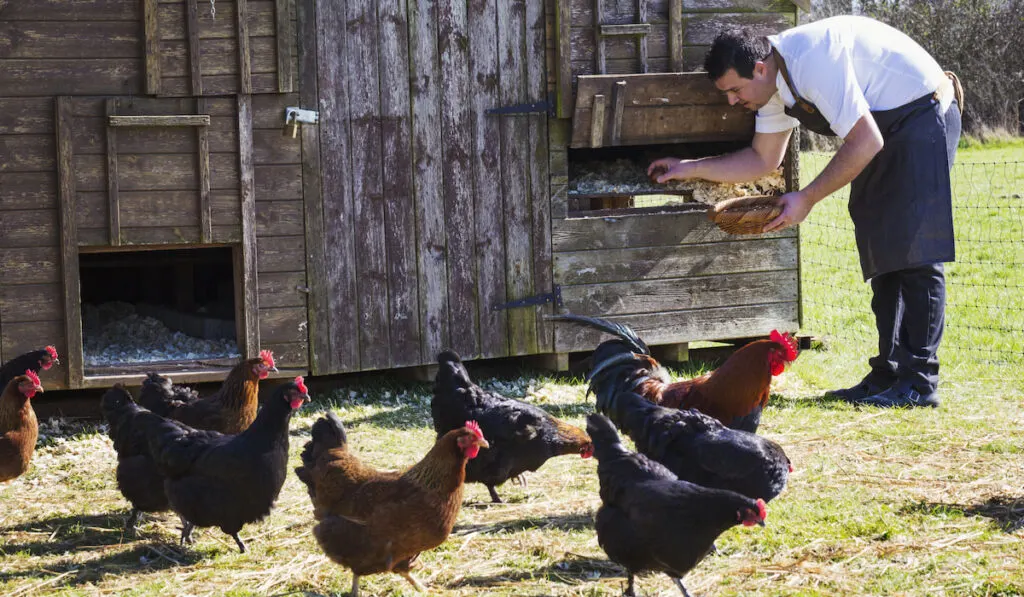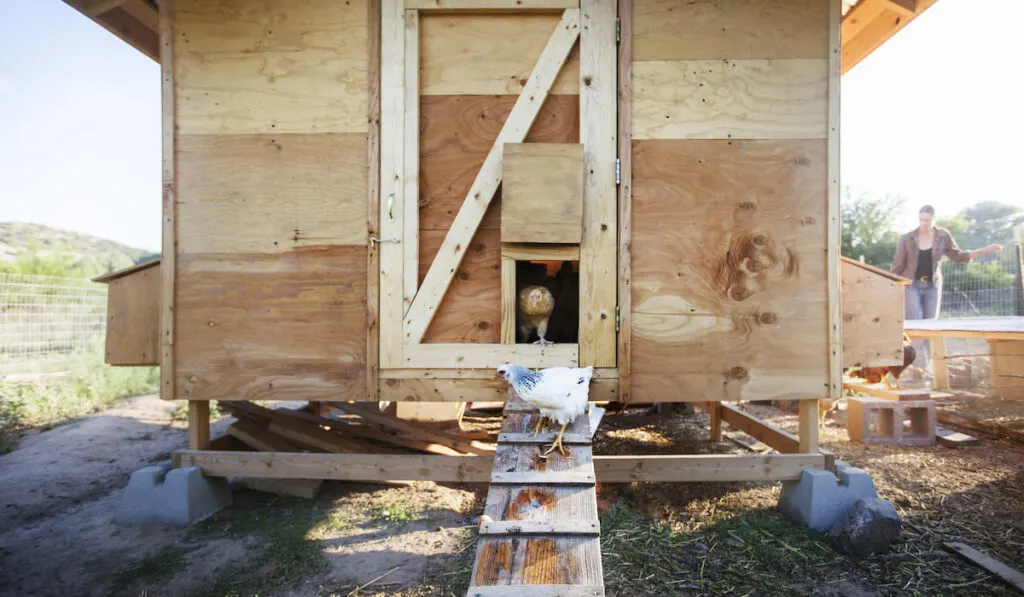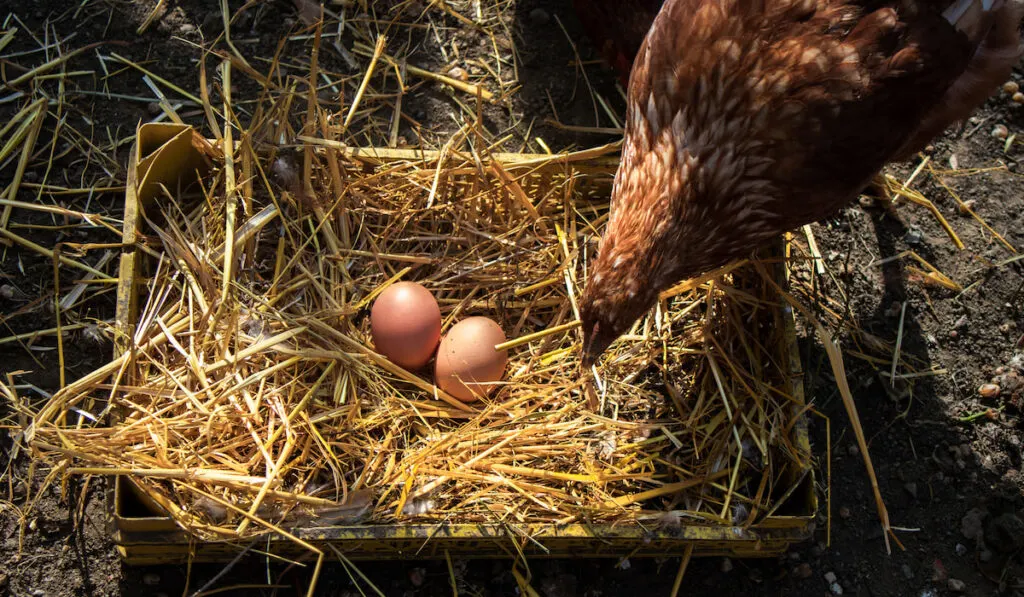Cleaning a chicken coop must be done with care, especially when you are cleaning it for birds to inhabit after a long break, or if you have bought a second-hand coop that needs cleaning out.
How do you clean a chicken coop for the first time?
This method will use white vinegar, plenty of water, scrubbing brushes, and sunlight if possible.
We’re going to explore how to thoroughly clean a chicken coop for the first time. You will want to do this for a new coop you are breaking in, or whenever you are moving new birds into a coop that has housed another flock in the past.
In this article, we’ll look at some step-by-step instructions to help you get your coop spotless.
Table of Contents
Step One: Clear the Coop Out

You will need to start by removing all the dirt and debris from the chicken coop. You can do this with a shovel if it’s deep, or a stiff brush. Sweep or scoop all the dirt from the coop.
You should also use the brush to remove any cobwebs from the corners of the coop. Brush down any edges/crevices where dirt has fallen.
The more dirt you can remove at this stage, the easier the rest of the job will be. Dried chicken manure can be difficult to shift, but if you persevere, it should come off. You may find that a shovel is best for scraping with.
Step Two: Wash the Interior
Using a hose is the easiest way to complete this step, but a bucket and some warm water will work if you cannot get a hose to the coop. A pressure washer is the best option if you have one.
Wash the inside and outside of the coop thoroughly, removing all the leftover dirt that step one failed to shift. Spray stubborn bits of muck, and use the hose to flush out any awkward crevices that you couldn’t clean properly.
If you find that the coop is still pretty mucky at this point, do some more scraping using your shovel. If you have things fairly clean, move on to the next step.
Step Three: Disinfect the Coop

Many people prefer not to use harsh disinfectants in places where animals will be kept. It is up to you what kind of disinfectant you wish to use, but white vinegar is sufficient for killing off bacteria and most bugs.
If you do choose to use a harsher chemical, such as bleach, make sure that you will not be putting chickens into the coop for a few weeks. This will give the chemical time to evaporate and should minimize the risk of harm to your animals. However, milder disinfectants are preferable, and usually a safer option.
You can apply white vinegar as a spray, or simply slosh it around the coop and scrub at it with a stiff brush. Wash the vinegar into the cracks, and don’t forget to sterilize the walls and ceiling of the coop, as well as the floor.
Step Four: Rinse
When you have finished applying the vinegar, you can allow it to sit for a few minutes before rinsing it off. It should have sterilized the coop beautifully.
Use your hose or some clean, plain water (no soap) to rinse the coop out. Check whether the water is clear, or if it is still getting clogged up with dirt. If it is still dirty, spend some more time cleaning it, and repeat the first four steps until you are satisfied that it is clean.
Don’t worry if you can still smell vinegar after rinsing. The scent will disappear as the vinegar evaporates and the coop dries.
Step Five: Wash the Perches

Next, remove any parts of the coop that can be taken off, such as perches and ladders.
These should be scrubbed down, rinsed, and then rubbed with white vinegar to reduce the risk of them reintroducing bacteria to the chicken pen. Rinse them afterward.
Remove food bowls, toys, drinkers, etc. These should all be emptied, washed, and sterilized.
Place the perches in a dry, sunny spot to dry, along with any other components that can be easily removed from the coop.
Step Six: Allow Everything to Dry
You should use old towels to soak up some of the moisture from the coop, especially if it is a wooden one. Press the towels into the wood to pull water out of the grains.
Do not expect to get the wood dry just using the towel, however. It will need to air dry before you can put chickens in the coop. If you can increase the amount of sunlight in the coop (by removing a side, lid, etc.), do so.
Sunlight is excellent at killing bacteria and insects, so it’s a great way to ensure the coop is sterile. It will also help it to dry.
If you can’t get any sunlight into the coop, simply leave it to air dry thoroughly. When it has done so, put the perches, ladders, etc., back in place.
Step Seven: Add a Natural Insecticide
You can then use food-grade diatomaceous earth on the coop and all the crevices in it. This will kill insects such as mites and ticks without harming the chickens.
Step Eight: Lay Down Fresh Bedding

Once everything is completely dry, it’s time to add bedding to the coop.
Make sure you cannot smell any lingering vinegar or disinfectant. This should have totally gone, leaving the coop without any distinctive smell. If the coop still smells bad, it may need further cleaning.
Get some fresh bedding for inside the coop so that most of the droppings from the new flock get absorbed before they hit the wood. This will reduce the frequency with which you need to deep clean the whole coop in this way.
Conclusion
Cleaning a chicken coop for the first time is easy to do with a scrubbing brush, water, and white vinegar. Use sunlight to finish it all off before adding fresh bedding. It is then ready for your flock.
